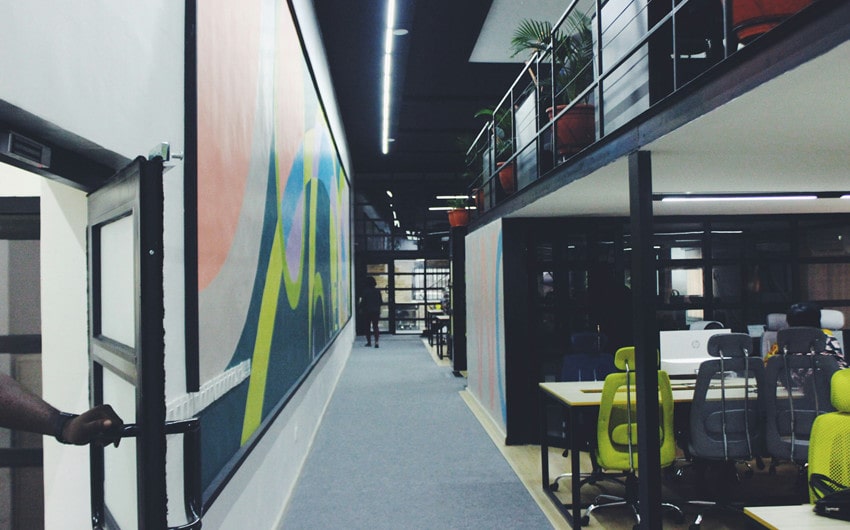Creating an Inspiring Workspace: How Lighting Design Boosts Creativity
Workspace design plays a crucial role in enhancing creativity and productivity. A well-thought-out workspace can foster innovation, collaboration, and overall job satisfaction. Among the myriad elements that contribute to an effective workspace, lighting emerges as a significant factor influencing mood, focus, and performance. Proper lighting not only affects visibility but also impacts our emotions and cognitive functions, which are essential for creativity.
In this guide, we will delve into the science behind how lighting affects creativity, explore ways to optimize your lighting setup, and highlight the holistic benefits of an inspiring workspace.
The Science Behind Lighting and Creativity
Understanding the relationship between lighting and cognitive functions is vital for anyone looking to enhance creativity in the workplace. Research has shown that different types of lighting — natural, ambient, and task — play distinct roles in shaping our mental state and cognitive performance.
Natural light, for example, has been linked to increased alertness and improved mood. Studies indicate that exposure to natural light can result in a significant reduction in feelings of stress and fatigue, which are often detrimental to creative thought. A comprehensive study titled “Effects of Light on Attention and Reaction Time: A Systematic Review,” which was published in the Journal of Research in Health Sciences, outlines how natural lighting contributes not only to our physical well-being but also to our mental performance.
Ambient lighting, which provides general illumination, can create a comfortable atmosphere that fosters collaboration and brainstorming sessions. Conversely, task lighting, which is focused lighting intended for specific tasks, can enhance concentration and precision in work that requires attention to detail. A Journal of Environment and Public Health study titled “Effects of Lighting Quality on Working Efficiency of Workers in Office Building in Tanzania” explains how varying light conditions can lead to different cognitive outcomes, thereby influencing creative output.
As professionals and workplace designers, understanding these nuances can empower you to create environments that enhance creative thinking and innovation.
Optimizing Lighting for Maximum Creativity
Creating the ideal lighting setup involves thoughtful incorporation of various light sources and configurations. Here are some actionable tips for optimizing your workspace lighting:
• Maximize natural light: Position desks and workstations near windows to benefit from the sun’s natural glow. Consider using sheer curtains to diffuse light without blocking it entirely.
• Incorporate adjustable lighting fixtures: Use dimmable lights or fixtures on adjustable arms so that employees can customize light intensity according to their needs.
• Leverage color temperature: Aim for a balance of cool white light for daytime tasks and warmer light for evening hours to support the body’s natural circadian rhythms.
It’s essential to remember that time management is also a crucial aspect of an efficient workspace. A well-lit environment can enhance focus and productivity, allowing for better time management and task completion.
The color temperature and intensity of lighting can significantly influence how the brain processes information. Cooler light (around 5000K-6500K) can stimulate alertness and cognitive function, making it effective for tasks that require high concentration. Warmer light (around 2700K-3000K) can create a relaxed atmosphere conducive to brainstorming and creative thinking.
Productivity
Optimizing workplace lighting is not just about comfort; it can directly influence productivity and creative performance. Research from Cornell University highlights that access to natural light can significantly enhance alertness and overall productivity, while also reducing eye strain, headaches, and feelings of drowsiness.
43% of employees report that a lack of natural light negatively affects their mood, often leading to low energy and decreased motivation. Rearranging furniture to maximize daylight exposure and using soft curtains to diffuse direct sunlight can create a more inviting workspace, improve lighting quality, and reduce strain on the eyes.
Keep in mind that setting clear boundaries around availability and focus times can help minimize interruptions and enhance productivity. By communicating work preferences and respecting colleagues’ focus periods, teams can foster a more organized and efficient work environment that supports everyone’s workflow.
Holistic Benefits of an Inspiring Workspace
The benefits of a well-designed workspace extend beyond immediate productivity gains; they encompass overall well-being and motivation. A thoughtfully lit environment can reduce stress-related health issues, promoting a healthier workplace culture that inherently supports creativity.
Workplace lighting plays a crucial role in employee well-being, significantly impacting stress levels and overall productivity. Properly designed lighting can enhance mood, increase focus, and create a more inviting atmosphere, which is particularly important in high-stress environments. Natural light, in particular, is known to boost serotonin levels, promoting a sense of calm and reducing anxiety. Additionally, the right lighting can help minimize eye strain and fatigue, allowing employees to work more efficiently and comfortably.
As stress can manifest physically, leading to symptoms such as chest pain, headaches, and sleep disturbances, creating a conducive work environment is essential. By prioritizing quality lighting in the workplace, managers and designers can foster a healthier, more resilient workforce.
When employees feel comfortable and inspired in their workspaces, their motivation levels increase, which can lead to greater innovation and collaboration. The calming and invigorating effects of appropriate lighting can also contribute to reduced anxiety and depression among workers, enhancing their overall work experience.
By prioritizing the creation of a healthy work environment, organizations can foster a culture of creativity that encourages employees to think outside the box. Proper lighting serves as a foundational element in this endeavor, supporting not only productivity but also psychological well-being.
Conclusion
The significance of lighting in nurturing creativity cannot be overstated. The interplay between natural, ambient, and task lighting influences not only workplace productivity but also the overall mood and cognitive function of employees. You have the power to optimize your lighting setups and create inspiring environments that enhance creativity.
We encourage you to experiment with different lighting arrangements and observe the impact on your own productivity and creativity. By making thoughtful choices about your workspace lighting, you’ll not only support your work but also contribute to a healthier, more innovative workplace culture. Embrace the power of light and watch creativity flourish in your professional environment.




